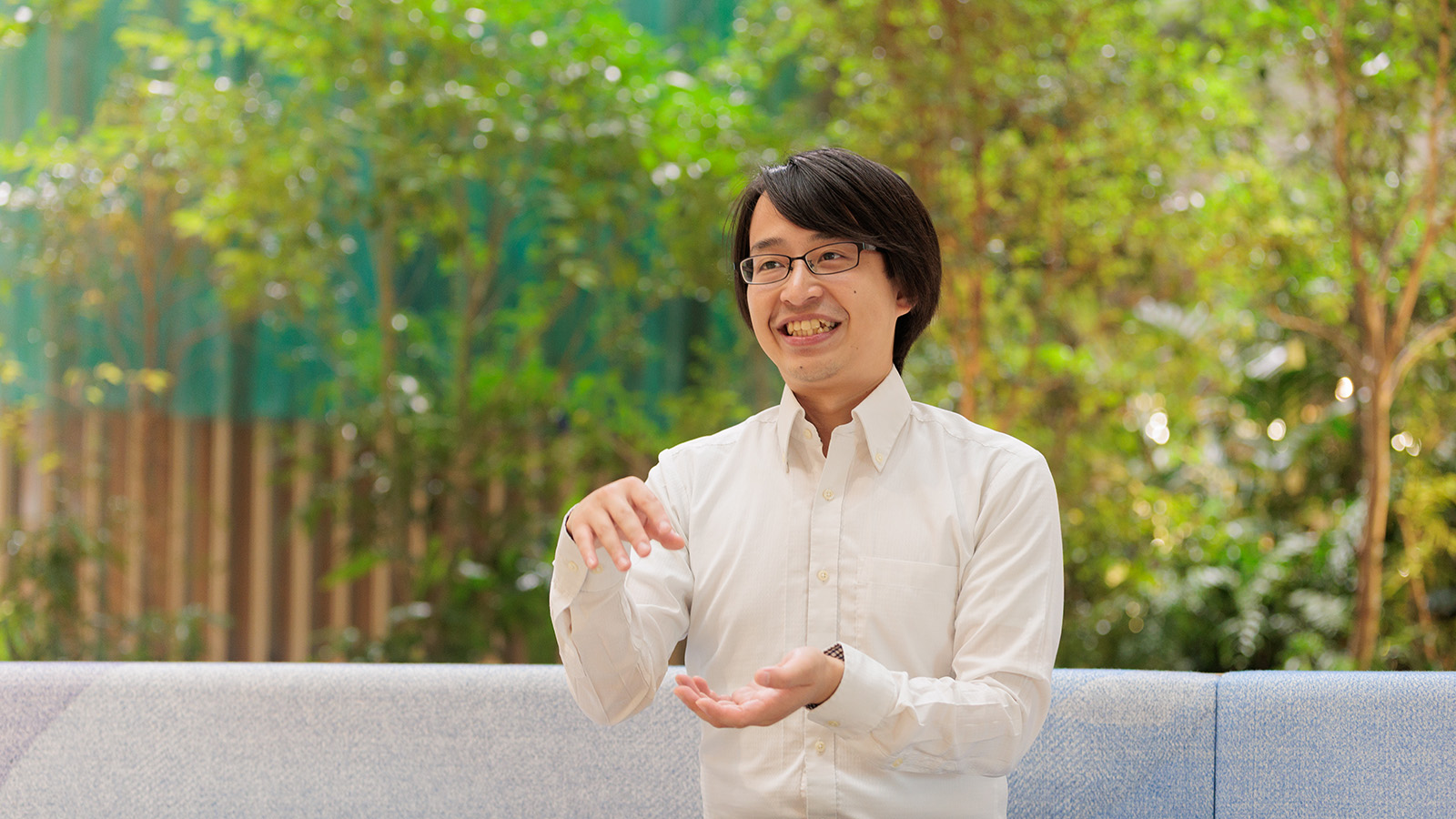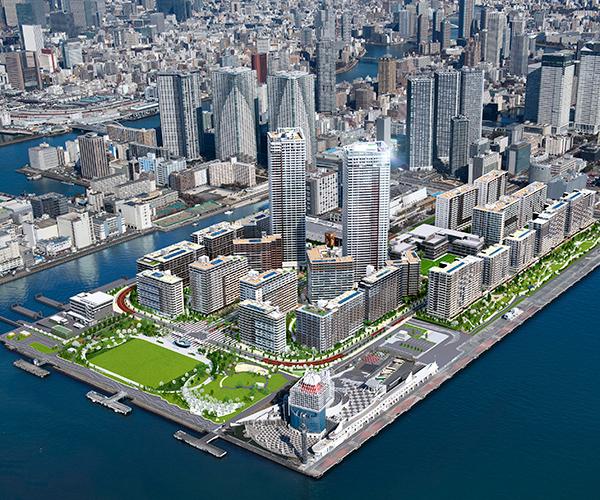
The Olympic and Paralympic Games Tokyo 2020 will have a lasting effect on the metropolis. A new Olympic Village dubbed HARUMI FLAG is the city complex where everything begins. The new town spread throughout Harumi, Tokyo, the transport nodal connecting urban and bay areas, is now under construction in an area of approx. 18 hectares. It will hold 5,632 privately-owned/rental flats in a total of 23 buildings which will accommodate as many as 12,000 residents by 2024. Let's walk through the future landscape of one of the biggest cities on the globe, Tokyo.
A summary of this article
- Tokyo Government, leveraging private sector funds and expertise, builds a town that will recall the excitement of the Tokyo 2020 Games and leave a lasting legacy for future generations.
- The private sector is focused on unified development and operation of a vast area encompassing 18 hectares.
- HARUMI FLAG provides urban development solutions, e.g., Hydrogen Power Generation, Energy Management, Security & Disaster Prevention, Public Area Lighting.
- The Sales Center offers the latest virtual reality experience, e.g., 270° harbor views, green courtyard townscapes.
The Most Extensive and Enormous Residential Area Project Urban Tokyo Has Ever Seen
In Harumi, a Tokyo municipal-owned area of 18 hectares, there are currently a total of 21 condominiums under construction. The new urban town has been given the name - HARUMI FLAG. The Tokyo Metropolitan Government, as part of a move towards urban renewal, selected 11 companies, including top-notch real estate firms, to form a corporate group responsible for the construction, sales, and lease of the condominiums and commercial facilities in the area. The project's goal is to have the residential area fully functioning by 2023 at which time the contractual transfer of the condominiums will be completed.
The expansive size of the project is not the only reason it is drawing so much attention. It has also been designed to serve as the Olympic Village for the Tokyo 2020 Games. After the Games, the town will continue to stand as an iconic testimony to the legacy of the remarkable development and operations of this municipally led project.

HARUMI FLAG after Completion - Bird's Eye View CG
What should be the goals for a town that develops into a legacy? The Tokyo Metropolitan Government lists three concepts for "this district that fascinates and makes everyone dreaming of living there."
The first concept is "a town of diverse communication and comfort." Takeshi Ikawa of the Tokyo Metropolitan Government explains the rich variety of flat types to be offered. "Apart from most flats with ownership designed for families with children, many types of rental flats will be available for more diverse families and households, including elderly people and foreigners. Some of them will be pre-furnished or deliver care services for their convenience."
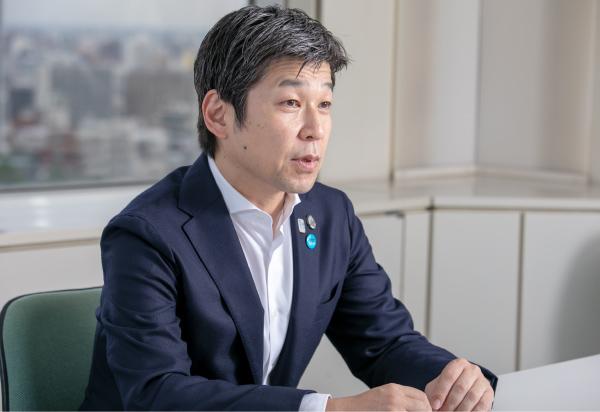
Takeshi Ikawa
Director of Public Redevelopment
Urban Development Projects Division, Bureau of Urban Development of Tokyo Metropolitan Government
Community spaces called "Street Plazas" will be laid out along the road passing through the center of the town being developed. Residential buildings will offer their ground floor spaces to commercial tenants like cafés. Mr. Ikawa believes they will provide community spaces that will encourage "interactions" among residents. "These spaces are also for visitors from outside the area. I hope a lot of tenants will come to the town to attract people," Mr. Ikawa said.
The second concept is "a town that offers relaxation and peacefulness in an environment of water and greenery." With three boundaries facing the sea and abundant green spaces inside, HARUMI FLAG will be a residential area that offers enticing urban nature. The plan includes green areas totaling approximately 40,000 m2. It is about 40% of the total area, much higher than what is allocated for typical residential complexes. Mr. Ikawa touched upon what made this possible. "Being designed as the Olympic Village for competitors, all the parking areas will be built underground. That will allow HARUMI FLAG to have abundant green spaces."
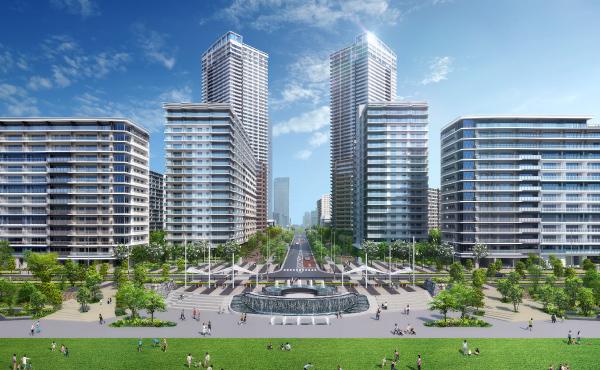
Harumi Pier & Green Street Park after Completion - Townscape View CG
A lawn-covered multi-purpose open square in the center creates a seaside open-air community space.

Elementary School CG
An elementary and junior high school located at Harumi 5-chome, with a 6,000 m2 playground. Attached swimming pool, martial arts gym, and gymnasium will be opened to the community.
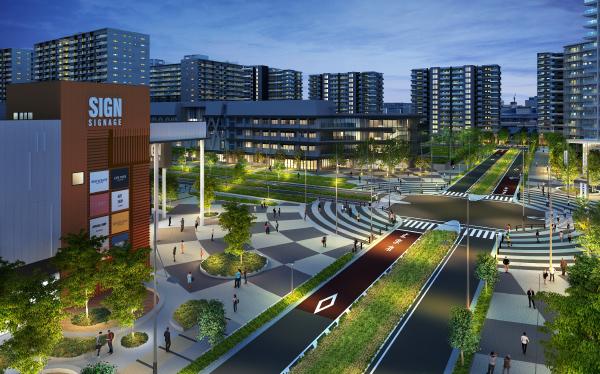
Townscape CG
Commercial and childcare facilities and elderly housing are included in the construction plan.
Leverage Private Funds and Know-How for Successful Real Estate Supply of an Unprecedented Level
The third concept is "a town that is committed to environmental and social sustainability," by leveraging the technology of hydrogen power, which will be explained in more detailed in the second part. Near the project area is a hydrogen station built on publicly owned land. It will supply hydrogen to fuel cell vehicles of Bus Rapid Transit (BRT) and city bus services that local residents will use to commute to and from the center of Tokyo. Pipelines buried under streets will deliver hydrogen to hydrogen fuel cell generators that will power common-use spaces of the condominiums. "This is going to be the first hydrogen power grid system in Japan that is put into practical use and is based on the technology of hydrogen fuel cell generators. It will cover the whole town and supply electricity and heat across the town," boasted Mr. Ikawa.
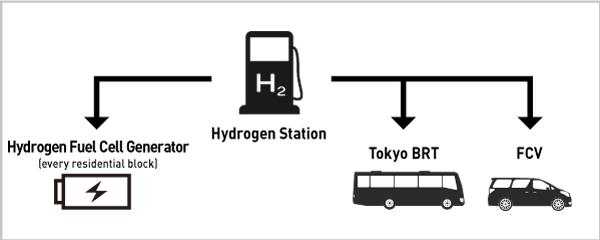
A hydrogen station and power grid connected via hydrogen pipelines covering the entire town supply power
With these concepts as the cornerstones, the afore mentioned private business operator group is responsible for resident condominiums buildings. It was an unprecedented move for Tokyo Metropolis to outsource a municipal-led redevelopment construction as a whole to private companies. What was behind this decision? Mr. Ikawa explained.
"The tender offer announced at the very early phase required that bidding companies be responsible for the capital investment and funds for the development and design of the Olympic Village, by selling or renting the real estate they built. The Tokyo Metropolitan Government members came to the decision to leverage the affluent funds, expertise, operating know-how, and insights that private companies afforded. What we are talking about is over 5,600 new flats. The expertise in selling and renting that number of rooms would be something public sectors definitely need from companies that have experience in the real estate market."
No private business has ever offered residential to the market on such a large scale at one time. It is common practice when developing real estate to keep a close watch on market trends and economic factors and put properties up for sale incrementally. In the HARUMI FLAG project, however, the enormous number of condominiums, with the exception of the two high rises to be built after the Tokyo 2020 Games, went under construction and will be placed on the market at the same time. Sales will start one after another. With a positive outlook towards this challenge, each member of the operating business group has been working to create an infrastructure system that supports the entire town.
Yoichiro Takagi of Mitsui Fudosan Residential, the representative firm of the project group, said, "What we have in mind is a town that brings enjoyment and convenience of the entire system almost as if the whole thing is a part of each individual's homes." It's a remarkable leap from what real estate developers delivered in the past.
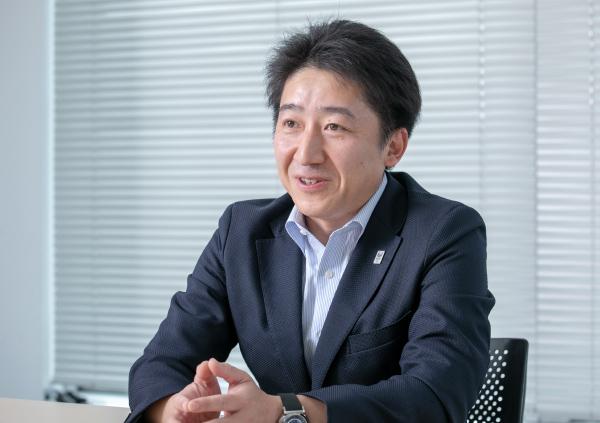
Yoichiro Takagi
Senior Project Manager
Tokyo Olympic and Paralympic Athletes' Village Department Promotion Group
Mitsui Fudosan Residential Co., Ltd.
A management organization that covers the entire project zone - that is what was planned to achieve a seamless, integrated operation of HARUMI FLAG. Apart from a block-based management union like those seen in typical condominiums, the plan includes a community management committee composed of members who have ownership of the residential flats. The system takes another step forward, i.e., a mutual support agreement to be signed by block-level management unions. These approaches aim to increase the convenience for residents. For example, any resident with ownership will be eligible to use 25 out of 51 shared facility rooms whenever they are vacant. That, for sure, will be a stimulus to nurture active communication that goes beyond a block community.
The group of private companies is focused on integrated development and operation of HARUMI FLAG with the leverage of urban design solutions. Panasonic has been playing the key role as a solution provider for these companies ever since the kick-off of this extensive project.
Create the Smartest, Most Stylish Model of Urban Life
Power supply using hydrogen fuel was already part of the initial concept the operating business group had for the town. Looking for solutions to make it a reality, the member companies approached Panasonic because it is known for its fuel cell technologies. "Our choice was the total technology package Panasonic offered, namely, EneFarm (residential fuel cell), and the hydrogen fuel cell generators for the power grid to be built in each block. Our discussions concluded that the energy management system available from Panasonic was the one that would perfectly meet the requirements we had on the table. The electronics giant provides fascinating solutions," said Mr. Takagi, recalling how Panasonic came on board.
Panasonic, on the other side, determined to fulfill its role by making comprehensive contributions in order to help create a town that would remind people of the Tokyo 2020 Games and leave a legacy for the coming generations. Katsuhiko Nagata, heading the Olympic Village project at Panasonic, said, "I'm sure the sports event will change Tokyo and Japan a lot. We will be witnessing significant moments. Taking on new challenges brought on by this turning point is our mission. I'm thrilled that I'm here as one of the members of this project. It's full of opportunities to come up with a wide range of cutting-edge technologies to design the urban residential area that will be long remembered in connection with the Tokyo 2020 Games."
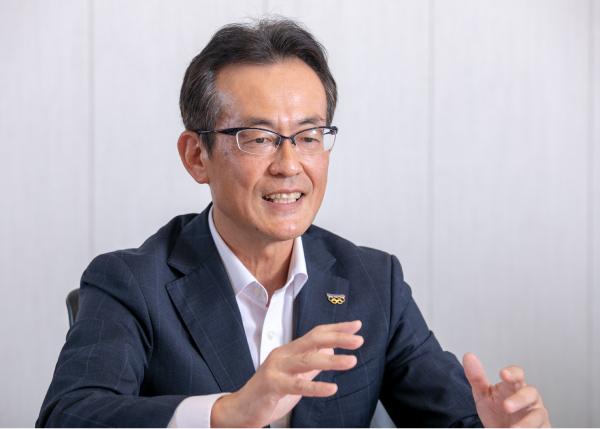
Katsuhiko Nagata
General Manager and Olympic Village Project Manager
Sales Promotion Department, Tokyo Olympic & Paralympic Enterprise Division
Panasonic Corporation
Urban development solutions of Panasonic offer wide coverage. Among them are Hydrogen Power Generation and Energy Management. Panasonic extends solution initiatives to Security & Disaster Prevention and Public Area Lighting.
System engineers from Panasonic took part beginning with the design phase of the emergency response facilities. Their insights helped the project members determine the facility's optimal locations and the number of response task team personnel appropriate to each. Panasonic-made 750 network-connected cameras will monitor town areas and common-use spaces of condominiums to ensure security for residents. These cameras will send images and videos to and be controlled at the emergency response center that monitors the entire premise of HARUMI FLAG via fiber-optic local area networks.
Seamless lighting experience is everywhere in HARUMI FLAG. What made that a reality is the enthusiasm and tireless effort of the lighting system engineers. They worked with the operating business group members and designers to even deliver new products that would meet their requests. Mr. Takagi recalls, "From the early phase, they had a clear vision of what they wanted for the lighting. They gave me tons of insightful ideas on types, positioning, and illuminance of lighting fixtures that would best create magazine-ready, fascinating night views of the bay area. I am proud that Panasonic has been given credit for the 'beauty of nights.'"
Another element being considered relates to the community. It is about building a digital signage system that helps communications throughout the town. The system, like others, plans to use the LAN that will be stretching throughout HARUMI FLAG. "I believe Panasonic has video technologies needed for this theme. Making the best of LAN capabilities is what we have been doing for a long time. Each building with digital signage on a large screen that tells stories of HARUMI FLAG residents, how they like and what they value in their lives there. That is what I want to do with the system under the plan," Mr. Nagata said enthusiastically about the technology.

HARUMI FLAG Area Network Connects Everything in the Town - Conceptual Schematic
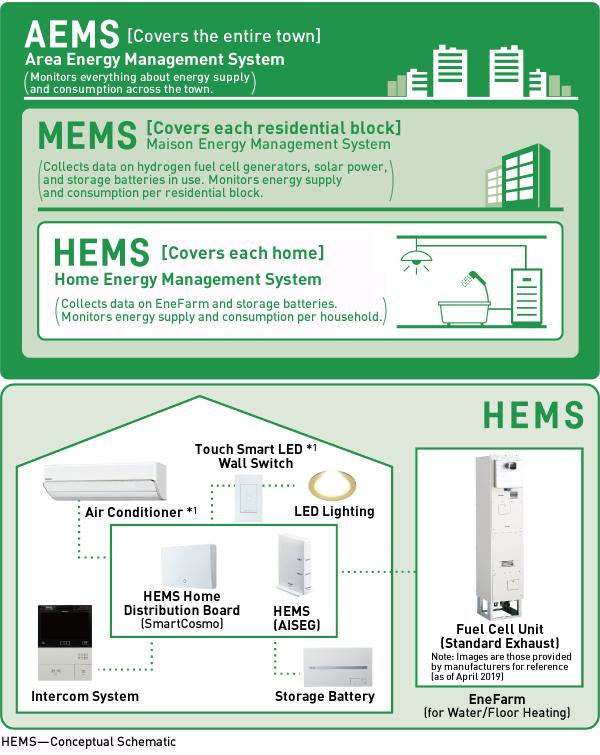
The area network collects data on energy across the town to visualize the data collected. Panasonic provides HEMS/MEMS system components.
Virtual Reality Conveys the True Charm of the City
Those interviewed at Panasonic shared their thoughts on how involvement in city planning will go through a drastic change. Mr. Nagata said, "Products have been designed to the requirements of developers, then delivered. That was the industry-norm. This will change in many ways. We will be working much more closely with developers, in other words, on the same page as they are, to come up with the best possible solutions." "To Companies, I convey what the goals are for the HARUMI FLAG project. To be a part of creating something new that is a packed full of new technology is what makes me thrilled," he added.
Panasonic had an opportunity to have a seat at an all-around solution proposal session. Held by the 10 corporate members (residential seller companies) of the operating business group, it took place at HARUMI FLAG Pavilion, a newly built sales center located in Harumi, Tokyo, in April 2019. Video equipment was carried into the venue from Panasonic. What was different from the past is that there was a chance to present VIRTUAL STAGE MIERVA, a four dimensional performance solution with a total package of the latest virtual reality (VR) video technologies developed anew through collaboration with lighting tech engineers.
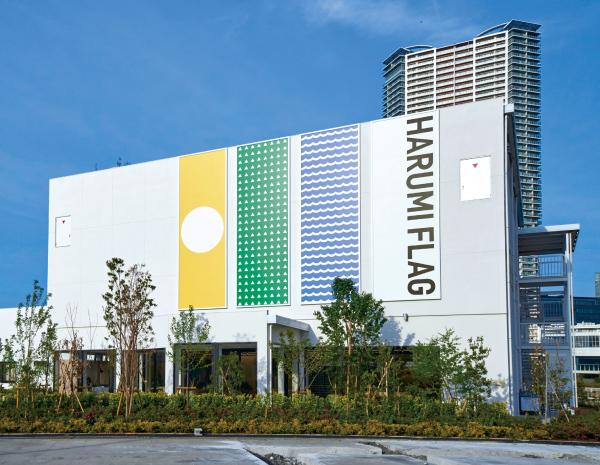
HARUMI FLAG Pavilion offers visitors virtual reality experience of real life.
How to approach and effectively appeal to potential buyers represents the toughest challenge for the project operators. Mr. Takagi from Mitsui Fudosan Residential said, "As HARUMI FLAG will be first used as the Olympic Village to accommodate athletes from around the globe during the Tokyo 2020 Games, entry to the premises will be very limited. That is what makes it difficult for us to communicate the real geographical charm of the 270° harbor views HARUMI FLAG is proud of. We had been looking for better ways to show the charm in a more realistic way." In the course, he noticed Panasonic has solutions. Virtual reality is one of the solutions born out of their intensive discussions.
Near-real view experience is a VR system born from their trial and error development. It reproduces morning-to-night changes of scenery, for example, Tokyo Bay and Rainbow Bridge, viewed from skyscrapers facing the sea. Here is another - Dome VR. Without goggles, visitors can enjoy VR videos of lush green courtyard townscapes or astonishing views from a condominium lounge on the 48th floor. Mr. Nagata and Mr. Takagi share the passion that drives them to move on to the next challenge, saying, "Please expect us to surprise you more with something new when the sales phase starts."
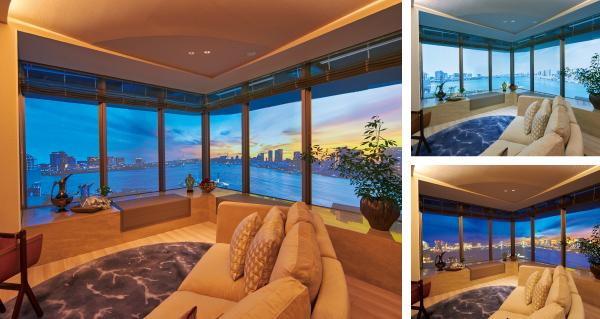
[VIRTUAL STAGE MIERVA, Near-Real View] Dynamically reproduces breathtaking views overlooking the sea
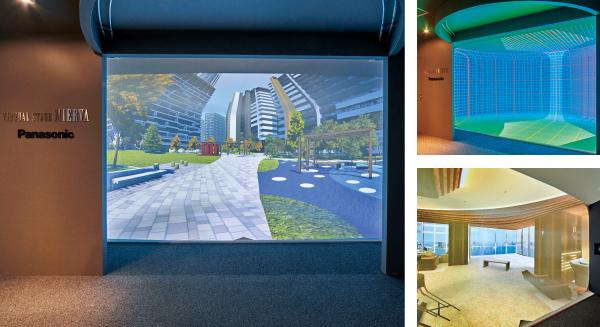
[VIRTUAL STAGE MIERVA, Dome View] Offers the experience of virtual townscape and living environment in completed HARUMI FLAG
According to Mr. Ikawa of Tokyo Metropolitan Development, "a model for a sustainable city of maturity" is the goal of HARUMI FLAG. Mr. Takagi touched upon future real estate developments. "There still remains land to be developed. I hope what HARUMI FLAG is going to achieve will be expanded to other cities to encourage sustainable urban development." The solutions in this story will definitely be the stimulus for residential complexes to be built in the decades to come.
- Reproduced from the website "Mirai-kotohajime," by courtesy of Nikkei Business Publications, Inc.
# # #
- Disclaimer:
- We would like to note that Panasonic Newsroom is not a place to address personal Customer Service issues. Even though this is not the forum, Panasonic is always eager to resolve your concerns. Our local customer services contacts can be found at Global Support or you can see our list of Social Media Accounts to find the right channel for your queries and concerns.
Related Links
Related News
- HARUMI FLAG, the City That Brings the Future to Today's Tokyo (Part 2 of 2) (Sep 5, 2019)
- The Challenge - Panasonic's Legacy for 2020 and Beyond (Aug 23, 2019)
- [Press Release] Panasonic Introduces VIRTUAL STAGE MIERVA Offering Futuristic Experience to a Condominium Sales Center of HARUMI FLAG, a New Town to Be Born at the Site of the Athlete Village (Apr 23, 2019)
- [Press Release] Panasonic to Commercialize Hydrogen Fuel Cell Generator (Nov 1, 2018)



